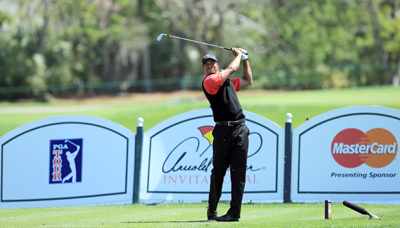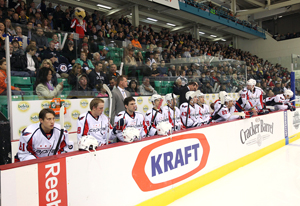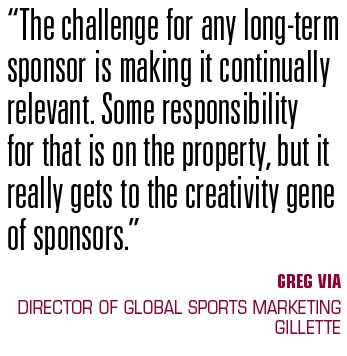Sports sponsorships can be like a new puppy. Initially, they receive universal affection. A few years later, as markets change and the CMOs who approved the deals are elsewhere, they aren’t quite as appealing. Bang, they’re off to the pound.
Still, there are those sports sponsorships that are as enduring as Mount Rushmore. While Gillette’s claim that it has been an MLB sponsor since 1939 is specious, the disposable razor blade pioneer started using pro baseball players in its marketing more than a century ago. In the pre-television era of the 1930s and ’40s, it flexed its marketing muscles by buying all of the ad inventory for national World Series radio broadcasts. All this time later, Gillette is still affiliated with MLB.
 |
| In a spot featuring San Francisco 49ers coach Jim Harbaugh, Visa asks NFL fans to dream up their own football fantasy prize. |
“The challenge for any long-term sponsor is making it continually relevant,” said Greg Via, director of global sports marketing at Gillette. “Some responsibility for that is on the property, but it really gets to the creativity gene of sponsors. It’s easy to do something around the Super Bowl or any time when consumer interest is high. To get more space at retail, the challenge is to be creative and build something that works when it is not that peak time of year.”
Visa’s NFL rights began in 1995, before widespread Internet use, and at a time when the league had a different commissioner. In the 18 years since, Visa’s marketing personnel has turned over more than a few times, as have most of its agency relationships.
So what’s the leading payment card’s secret for sponsorship longevity at a time when so many marketing assets get jettisoned like last Sunday’s newspaper?
“After this long together, we know the NFL drives transactions and it’s something our card issuers and merchants
want,” said Alex Craddock, Visa head of North America marketing. “Still, every year we have to ask ourselves, ‘How are we going to make this connection different and valuable to fans that are our cardholders?’”
Like most NFL sponsors, many of Visa’s previous NFL promotions paid off in Super Bowl trips, whether it was an offer of Super Bowl tickets for life (2010) or a Super Bowl trip for 11 people (2011). Visa’s “My Football Fantasy” promotion might be termed a “user-generated promotion,” since it asks consumers to dream up their own ultimate gridiron prizes. Eight winners will be picked and Visa is seeking entries via Twitter and Instagram for a contest that runs from the beginning of this NFL season to Feb. 2.
“It’s not something that comes easily. You have to delve into how fans are experiencing the game and the insight we came up with there was that the NFL has become more of a year-round sport,” Craddock said. So instead of a Super Bowl payoff, it could be any kind of football fantasy, so long as the cost doesn’t exceed $100,000. Added Craddock, “We thought this was the best way to give them experiences that got them closer to the game.”
Closer to the game. Behind the ropes. Unique experiences. A property’s ability to provide all of those to sponsors and their consumers has become an imperative. Branding has decreased in importance, especially since most of the brands buying top sports sponsorships already have nearly 100 percent unaided brand recognition.
“Back in the day, it was all about selling inventory centered on signage and exposure,” said Derek Aframe, senior
 |
MasterCard has an 18-year relationship with the PGA Tour.
Photo by: Getty Images |
vice president at Octagon, which administers many long-term sponsorships, including MasterCard’s 18-year-old sponsorship with the PGA Tour. “There’s only one experience of being on an NFL sideline during a game or being behind the ropes at a PGA Tour event. Now our clients can actually differentiate through these relationships.”
As a paradigm, Aframe offered a digital sweepstakes during the British Open that married new technology with the delivery of a decidedly old-world grand prize: The winner got to hoist a pint at a local pub with golfer Graeme McDowell.
If a property is flexible, a sponsorship can endure, even with the most extreme changes in market conditions. Bank of America’s MLB league rights date to 2004, or 1997, if you include MBNA’s payment card rights. Bank of America’s sponsorship portfolio also includes nine MLB team deals.
Over the years, those rights were used by the bank for branding and product-specific marketing, including affinity banking products. Then the recession of 2008 hit the entire banking category like a fastball to the jaw.
“Our brand metrics were at all-time lows,” acknowledged Charles Greenstein, senior vice president of global sponsorship marketing at Bank of America, which has about 18 sports sponsorships. “So the [MLB] sponsorship became about shared interest and capturing the equities of baseball for the benefit of the bank’s image.”
Consequently, much of Bank of America’s baseball-centric marketing refocused on corporate social responsibility, including an “Express Your Thanks” platform allowing fans to support returning veterans and the Wounded Warrior Project.
“The bank had military relationships dating back 90 years, so there was some synergy, but this was a way to reconnect the brand and recapture some positive sentiment, which was a real win for us,” Greenstein added.
Coke has been an NBA sponsor since 1986. When the beverage marketer switched its NBA marketing from Coke to Sprite in the early 1990s, the NBA marketers were unhappy, assuming the league would gain more exposure if aligned with the world’s most renowned consumer brand. However, the link became a case study. Sprite grew to be a billion-dollar brand, aided by the NBA’s appeal among a multicultural audience and the glamour of the NBA slam-dunk contest (see related story). What started with enter-at-retail tear-pad contests is now filled with social and digital efforts that help decide who enters, who wins, and what dunks should be attempted.
“To keep any of these relationships fresh, you have to come up with new assets and new ways to interact with consumers and fans,” said Mark Tatum, the NBA’s executive vice president of global marketing partnerships. “Our goal is still the same as it was in 1986: to deliver a passionate fan base. Both of our businesses got more global and the way both of us interact with consumers has changed significantly, so probably the most important things are creativity and understanding of how businesses change.”
The NBA is one of 700 sports and entertainment sponsorships Coke has in North America, including the Olympics, which date to the late 1920s.
“Our business is changing quickly enough now that we need our [property] partners not so focused on contract specifics and being willing to change,” said Sharon Byers, Coke’s senior vice president of sports and entertainment marketing partnerships.
As an example of a relationship that evolved, Byers cited Coke’s 11-year-old NCAA rights deal, which over the years became more focused on the intersection of entertainment and sports. Now the Coke Zero Countdown concert is a major part of the Final Four weekend.
“It’s about understanding where and how consumers are consuming the particular property, and moving as they do,” Byers said.
 |
Kraft has been with the NHL since 1989. Its Hockeyville promotion takes NHL games to small community rinks across Canada.
Photo by: Getty Images |
If Sprite and the slam-dunk contest is the NBA’s gold standard for sponsor activation, at the NHL it’s Kraft’s Hockeyville promotion, through which preseason NHL games have been played at small community rinks across Canada since 2006. In later years, the game has been telecast nationally, as has the announcement of which small town would play host.
“This used to be about just putting logos on packaging; clearly that’s changed,” said Keith Wachtel, NHL executive vice president of global partnerships. “When we saw it was getting more votes than ‘Canadian Idol,’ there was obviously room for growth, so we got the communities and clubs more involved.”
“For any of these [sponsor] relationships to grow and continue, you have to innovate,” he said. “Media rights are still an important part of the model, but the business has shifted to controlled media, events, mobile, social and integration with players, broadcasters and clubs. We can deliver all of that now.”
Nike’s collection of more than 6,000 sponsored athletes, teams and leagues dwarfs anyone else’s. John Slusher, Nike executive vice president of global sports marketing, said that since leagues move deliberately when it comes to adding new marketing inventory, constant review is vital.
“The underlayer [neck] branding we have with MLB has been great for our business,” Slusher said, “but it’s something we talked about for years [with MLB] about taking things to the next level before it became part of the next contract.”
With an insatiable demand for quantifiable sponsor assets, additional camera-visible signage is the new catnip that will keep sponsors in the fold, or attract new ones. Sponsors want to push their brands onto the field of play, and properties are hoping to accommodate them, with things like uniform branding or more signage in or around the action — and the TV cameras.
Some recent examples are the new ad space on the apron of NBA courts or T-Mobile’s still-developing move into MLB dugouts, in which branded wireless phones connect managers with their bullpens. On sports with sidelines, how long will it be before all of the coaches’ clipboards are replaced by branded tablet computers?
“Sponsors’ needs have moved from branding to enhancing the fan experience,” said Octagon’s Aframe. “The push for the future is for real integration into the fabric of the game.”







